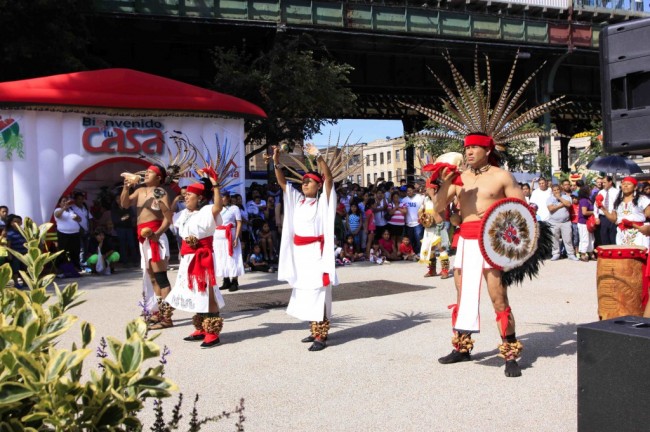
We are celebrating 15 years — and counting — of stories that are deeply researched and deeply felt, that build a historical record of what the city has been.
We are celebrating 15 years — and counting — of stories that are deeply researched and deeply felt, that build a historical record of what the city has been.
To mark the fifth anniversary of the launch of Urban Omnibus, we look at themes that have emerged in our content over time and think about what those threads reveal about the needs, desires, and priorities of the city today.
If you’ve ever had a conversation about living in New York, you are well aware of the role neighborhood plays in identity: your neighborhood stands in, accurately or not, for socioeconomic status, age, and lifestyle. Thus the neighborhood — and its shifting and contentious boundaries, names, histories, and uncertain futures — becomes fertile ground for teasing out the character and changing nature of the city on a micro scale.
Such is the case in writer Suketu Mehta’s walk and talk through Jackson Heights, the neighborhood where he grew up, discussing how immigrant experiences are inscribed in the urban landscape. Observing the proliferation of money transfer businesses — tell-tale signs of a thriving remittance industry — and phone booths — space for connecting to family across international borders — Mehta speaks to the unique identity of a place bred from the convergence of many backgrounds that share the fundamental bond of living across borders.
Just as Mehta’s observations draw out the relevance of this dislocated experience to the larger city, Dalton Conley uses his personal history in the Lower East Side to explain how the economics of home ownership affect the well-being of a neighborhood and its residents. Walking up Avenue D, Conley discusses the geography and concentration of opportunity and the lack thereof.
Expanding economic opportunity is often the stated goal of both externally and internally driven neighborhood change. And finding a proper balance between promoting economic growth and nurturing existing neighborhood assets often requires visionary creativity. Isamu Noguchi and Mark di Suvero are two such visionaries who saw promise in the neighborhood of Long Island City long before external capital investment followed suit. Years later, on the cusp of massive change, the institutions each artist founded sought to create a vision that balanced growth with maintaining the character and honoring the local history of their adopted home.
The vision of the Noguchi Museum and di Suvero’s Socrates Sculpture Park is to engage artists in envisioning Long Island City. And, to be sure, the role of artists in neighborhood change is a trope as common as it is often oversimplified. The creation of SoHo is perhaps one of the most famous examples of artists changing a neighborhood, but as Yukie Ohta shows in her history of the neighborhood, SoHo’s current incarnation can be traced to a complex blend of activism, economics, and regulation.

Mexica ceremony in Corona Plaza by Tenochtitlan Calpulli Tletl Papalotzin | Photo by Neshi Galindo, Courtesy of the Queens Museum of Art
A tweaked version of this blend is at work across the city today, as new concentrations of cultural production arise while others dissipate. Our series on Naturally Occurring Cultural Districts — urban areas where creative individuals and organizations tend to cluster — looks at unique ecosystems in four such districts — Corona, Queens; Fort Greene, Brooklyn; Hunts Point, the Bronx; and St. George, Staten Island — and discusses their lessons for other neighborhoods.
Local environments often act not only as staging ground for creative residents, but also as inspiration for their work. That of two Harlem-based filmmakers, Rainer Ganahl and Andrew Padilla, challenge the economic and social conditions that simultaneously leave El Barrio struggling from “haunted houses” — boarded up, empty residences above commercial business — and gentrification.
Engagement like Ganahl and Padilla’s can reveal much more of a neighborhood’s character than meets the eye. And our very own Field Trips try to unearth the unique community histories and dynamics lurking beneath the surface of neighborhoods like Steinway Village and Gerritsen Beach/Marine Park. We hope to catch you out in your — or somebody else’s — neighborhood soon!
The views expressed here are those of the authors only and do not reflect the position of The Architectural League of New York.